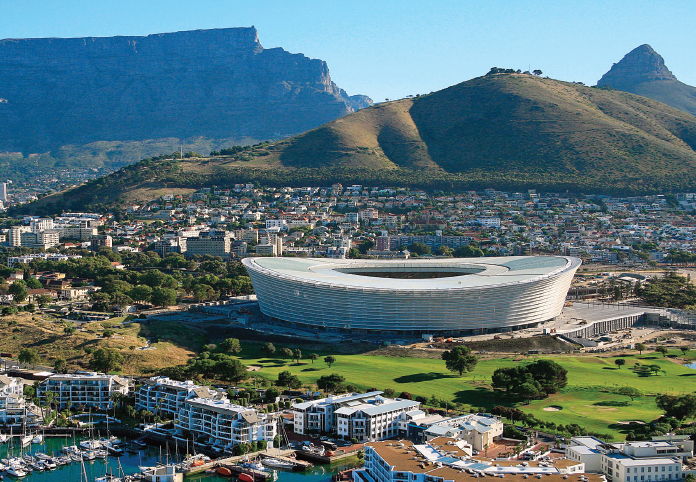Political Change in Africa Since 1990
Democracy’s rise in South Africa was part of a trend toward elected civilian rule that swept through sub-Saharan Africa after 1990. The end of the Cold War that followed the breakup of the Soviet Union in 1990 transformed Africa’s relations with Russia and the United States. Communism’s collapse in Europe brought an abrupt end to Communist aid to Russia’s African clients. U.S. support for pro-Western dictators, no matter how corrupt or repressive, declined as well. But the decrease in support for dictators left a power vacuum in which ethnic conflicts intensified, with often-disastrous results.
For instance, in the early 1990s the United States cut off decades of support for the anticommunist General Mobutu Sese Seko (1930–1997), who seized power in 1965 in Zaire (the former Belgian Congo, renamed the Democratic Republic of the Congo in 1997) and looted the country. Opposition groups toppled the tyrant in 1997, and a civil war ensued that left an estimated 5.4 million dead by 2007.
The agreement by national independence leaders across the continent to respect colonial borders prevented one kind of violence, but resulted in another. In countries whose national boundaries had been created by colonial powers irrespective of historic divisions, ethnic strife sometimes boiled over into deep violence, such as the genocides of ethnic Hutus by Tutsis in Burundi in 1972 and by Tutsis of Hutus in 1993 and 1994 in Rwanda, which left hundreds of thousands dead. A test of the alternative to preserving national boundaries came amid efforts to ease tensions that had created famine and hardship in Sudan. In 2011, 98 percent of the electorate in southern Sudan voted to break away and form a new country, South Sudan. The early promise of peace after separation has been challenged by increased ethnic and political violence in South Sudan.

Greenpoint Stadium, Cape Town, South AfricaThis modern stadium, complete with a retractable roof, was built especially for the 2010 soccer World Cup and seats sixty-eight thousand people. The 2010 matches marked the first time the World Cup was held in Africa. South Africa’s successful handling of this global event became a matter of great pride for the country and the continent. To the left of the stadium is Cape Town, with the famous Table Mountain in the distance. (© AfriPics.com/Alamy)
Amid these conflicts, political and economic reform has occurred in other African nations where years of mismanagement and repression had delegitimized one-party rule. Above all, the strength of the democratic opposition rested on a growing class of educated urban Africans. Postindependence governments enthusiastically expanded opportunities in education, especially higher education. The result was a growing middle class of educated professionals who chafed at the ostentatious privilege of tiny closed elites and pressed for political reforms that would democratize social and economic opportunities. Thus after 1990 sub-Saharan Africa accompanied the global trend toward liberalization and human rights.
Why did South Africa’s white-minority government agree to end apartheid?
